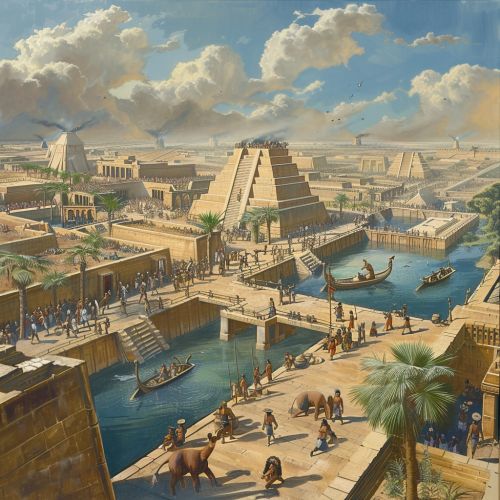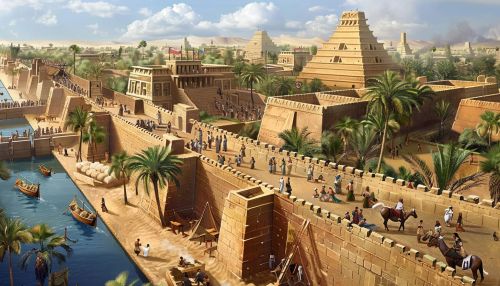Sumerian Civilization
Overview
The Sumerian civilization, one of the earliest known civilizations in human history, emerged in the southern part of Mesopotamia, in what is now modern-day Iraq. This civilization is credited with numerous pioneering achievements in various fields such as writing, architecture, and governance. The Sumerians thrived during the Early Bronze Age, around 4500 to 1900 BCE, and their contributions have had a lasting impact on subsequent cultures and civilizations.


Geography and Environment
The Sumerian civilization was located in the fertile region between the Tigris and Euphrates rivers, known as the Fertile Crescent. This area provided rich soil and abundant water resources, which were crucial for agriculture. The Sumerians developed an intricate system of irrigation to manage the water supply, allowing them to cultivate crops such as barley, wheat, and dates. The geography of the region also facilitated trade and interaction with neighboring cultures.
Society and Culture
Social Structure
The Sumerian society was hierarchical, with a clear division between the ruling class, priests, merchants, artisans, and laborers. At the top of the social pyramid were the lugal, or kings, who were considered representatives of the gods on Earth. Below them were the priests, who played a crucial role in maintaining religious and social order. Merchants and artisans formed the middle class, while the majority of the population consisted of laborers and farmers.
Religion
Religion was central to Sumerian life, and the Sumerians were polytheistic, worshipping a pantheon of gods and goddesses. Each city-state had its patron deity, and the ziggurat, a massive temple complex, was the center of religious activity. Key deities included Anu (the sky god), Enlil (the god of air), and Inanna (the goddess of love and war). Religious rituals and offerings were an integral part of daily life, and the Sumerians believed that their well-being depended on the favor of the gods.
Government and Law
The Sumerian city-states were independent political entities, each governed by a lugal or an ensi (a priest-king). The government was theocratic, with the king serving as both a political and religious leader. The Sumerians are credited with creating one of the earliest known legal codes, the Code of Ur-Nammu, which laid down laws and regulations for various aspects of society, including property rights, trade, and family matters.
Economy and Trade
The Sumerian economy was primarily agrarian, with agriculture forming the backbone of economic activity. The surplus produce from farming allowed the Sumerians to engage in trade with neighboring regions, including Anatolia, the Indus Valley, and Egypt. They traded goods such as textiles, pottery, and metalwork. The Sumerians also developed a system of cuneiform writing, which facilitated record-keeping and the administration of trade and commerce.
Achievements and Contributions
Writing
One of the most significant contributions of the Sumerian civilization is the invention of cuneiform writing. This system of writing, which involved pressing a reed stylus into clay tablets, was used for various purposes, including administrative records, literature, and legal documents. The Epic of Gilgamesh, one of the oldest known literary works, is a testament to the literary achievements of the Sumerians.
Architecture
The Sumerians were skilled architects and builders, known for their construction of ziggurats, which were massive terraced structures that served as temples. These structures were made of mud-brick and were often the focal point of Sumerian cities. The Sumerians also developed advanced techniques in urban planning, including the construction of canals, walls, and streets.
Science and Technology
The Sumerians made significant advancements in various fields of science and technology. They developed a sexagesimal (base-60) number system, which is still used in measuring time and angles. They also made contributions to astronomy, medicine, and mathematics. Their innovations in irrigation and agriculture had a lasting impact on subsequent civilizations.
Decline and Legacy
The decline of the Sumerian civilization began around 2000 BCE, due to a combination of factors including internal strife, invasions by neighboring peoples such as the Akkadians and Elamites, and environmental changes. Despite their decline, the Sumerians left a lasting legacy that influenced subsequent cultures and civilizations in the region. Their innovations in writing, law, and architecture continued to shape the development of Mesopotamian and broader Near Eastern societies.
